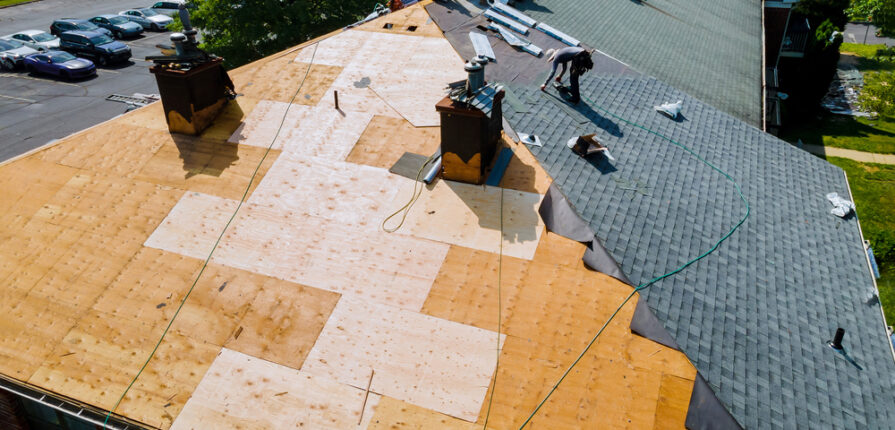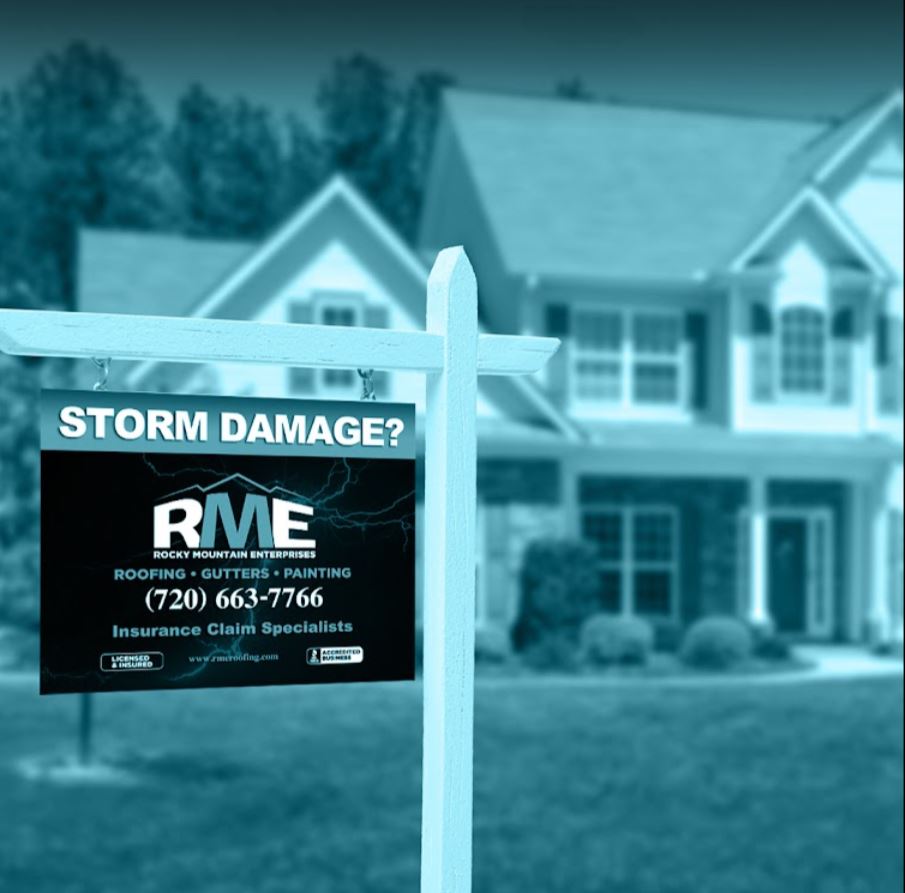Repair a Roof vs. Replace a Roof
The first question we must ask ourselves is whether or not we should repair a roof or replace a roof? Many factors go into making this decision, including cost, age, and roof condition. If you have ever been inside a house where the roof was leaking, you know how much damage water does to a home. When choosing between repairing or replacing a roof, you want to make sure you choose the right option for your situation. Here are some things to consider before deciding if you should repair or replace your roof. You can also contact our roofing professionals at RME Roofing, we are always happy to answer your questions!
Cost
The cost will always play a role in any decision regarding repairs or replacement. You may find that the cost of repairs is cheaper than having a complete roof replacement done. However, if you do decide to replace your roof, you will save money over time. A good rule of thumb is to look at what kind of warranty comes along with each type of roofing material. If you are unsure about the quality of a particular brand, you can check out reviews online.
Age
Another factor to take into consideration is the age of your roof. If your roof is older than 10 years old, you might want to think about replacing it instead of fixing it. Older roofs tend to leak more often than newer ones. Also, if you live in a region that experiences heavy rainfall, you might want to consider replacing your roof sooner rather than later.
Condition
If your roof looks damaged or worn down, you might want to opt for a roof replacement. However, if your roof appears in great shape, you might want to try repairing it first. Repairs can last longer than replacements, and they are easier to perform. If you plan on doing a lot of work around your roof, you might want to invest in a professional roofer specializing in roof repairs.
Insurance Coverage
Finally, you want to ensure that your insurance policy covers roof repairs. If you don’t have enough coverage, you could pay more out-of-pocket than necessary. If you have enough coverage, however, you won’t have to worry about getting stuck with a bill after a storm hits.
How Long Should a Roof Repair Last?
Several factors determine how long a roof repair lasts. First, the material being repaired will play a massive role in how long it takes to complete the job. Due to its durability, a metal roof would probably need to be replaced sooner than a wood roof. Second, the size of the area being repaired will have a significant effect on how long it takes to finish the project. Smaller jobs might take less time than larger ones. Third, the weather conditions will affect how fast the roofing company completes the job. Rainy days tend to slow down projects while sunny days speed them up. Fourth, the experience level of the workers performing the work will make a difference. Experienced roofers can do their job faster than inexperienced roofers. Lastly, the quality of materials being used will significantly impact the length of time it takes to finish the job. Cheap materials are not always the best choice. Quality materials are going to last much longer than cheap materials.
Can You Repair a Section of a Roof?
You can use various materials to fix a damaged area of a roof. If the damage is minor, you may want to try using tar paper. You should cut out the damaged area and apply a layer of tar paper over the roof’s entire surface. Next, you need to cover the tar paper with shingles. Once you have finished covering the entire damaged area of the roof, you should wait until the weather warms up before applying any additional layers of material.
If the damage is severe, you’ll probably want to call a professional contractor specializing in roof repairs. An experienced roofer will know how to properly assess the damage and determine what type of repair is best suited for the situation.
How Do I Know If I Need to Replace My Roof?
Roofing materials
Roofing materials are the primary components of a roof. Many types of roofing materials range from asphalt shingles to metal roofs. Each type of material has its pros and cons. Asphalt shingles are cheap and durable but tend to crack over time. Metal roofs are expensive and last longer than asphalt shingles; however, they require maintenance. Wood shake roofs are inexpensive and long-lasting but tend to leak. Slate roofs are the most expensive option; however, they are highly durable and last for decades.
Roof pitch
The pitch of a roof refers to how steeply the roof slopes. A low-pitched roof is less likely to leak, while a high-pitched roof is more prone to leaks.
Roof size
A larger roof means a more extensive surface area; therefore, a more significant amount of water can collect. If you live in a region where heavy rain falls often, you may want to consider replacing your roof sooner rather than later.
Roof shape
If your roof is flat, you should probably wait until after winter before making any repairs. Flat roofs can easily become ice dams which lead to severe damage.
Roof location
If your roof is located near a body of water like a lake, then you should check out the condition of your roof more frequently. Water can cause serious structural problems if left untreated.
Roof age
Roofs built before 1980 were not designed to withstand extreme weather conditions. These older roofs are susceptible to leaking and rot.
Roof insulation
Insulation helps keep your home warm in the winter and cool in the summer. Insulation is beneficial if your roof is exposed to direct sunlight.
How Long Does a Shingle Roof Last?
A shingled roof can last anywhere between 15-30 years, depending on how well maintained it is. Another factor that can influence how long a shingle roof lasts is weather conditions. A properly installed shingle roof should have no leaks and not require any repairs until at least ten years after installation. If the roof leaks, it’s time to call a professional roofer.
What kind of materials make up a shingle roof?
Two types of materials are commonly used for shingles: asphalt and wood. Asphalt shingles are composed of bitumen, sand, gravel, limestone filler, and fiberglass mats. Wood shingles are made of cedar, redwood, pine, or composite wood. Both have their advantages and disadvantages.
Is It Worth Patching a Roof?
Roof patches have been around since the beginning and were originally used to keep water out of buildings. Roof patches are still used to prevent rainwater from getting inside homes and businesses. Many different types of roof patches are designed for specific purposes. Here are some things to consider before deciding whether or not to patch your roof.
You’ll need to decide what type of roof you have and where the leaks are coming from. Once you’ve decided where the leaks are coming from, you’ll need to figure out what kind of material you’d like to use. Most roof patches are made of asphalt shingle material; however, you can find patches made of tar paper, metal, wood, plastic, fiberglass, and even concrete. Each material has its pros and cons.
Asphalt shingle materials are cheap and easy to install but tend to crack and peel off after a few years. Tar paper is durable and long-lasting but tends to get brittle and break easily. Metal roof patches are expensive and difficult to install, but they last forever. Wood roof patches are inexpensive and easy to install; however, they don’t hold up well to extreme weather conditions. Fiberglass roof patches are affordable and easy to install, yet they aren’t recommended for high wind areas. Concrete roof patches are extremely heavy and hard to install, but they are the strongest and longest-lasting option. Plastic roof patches are lightweight and easy to install, although they won’t last as long as other options.
Once you’ve figured out what type of material you want to use, you’ll need to determine how big your patch will be. A small patch will cover a smaller area than a larger patch. Smaller patches are easier to install and less likely to cause damage to your home. Larger patches take longer to install and are harder to maneuver around obstacles. When choosing a size, leave enough room between the patch’s edges and any existing roof tiles. Also, ensure you leave at least 2 inches of space above the top edge of the patch. You can add additional roofing material layers without worrying about damaging the patch.
You’ll also need to choose what color you want your patch to match. Many roofers recommend using matching colors for each layer of roofing material. This makes it easier to identify the various layers of roofing material and helps to ensure that the patch blends seamlessly with the rest of the roof.
Finally, you’ll need to decide how you want to apply the patch. Do you want to put down a single sheet? Or would you rather lay down several sheets? Single-sheet applications are cheaper and easier to install but require more maintenance. Layered applications are stronger and last longer, but they cost more and require more skill to install correctly.
Ready For a Roof Repair or a Roof Replacement?
A roof inspection is one of the most important things you can do to protect your family and property. If your roof needs repairs or replacement, RME Roofing can help you decide whether it makes sense to invest in a new roof or just patch up some holes.
The team at RME Roofing knows what types of roofs work best for homes in Colorado. We’ll inspect your roof, identify problems, and provide recommendations based on your budget and your home’s unique features.


